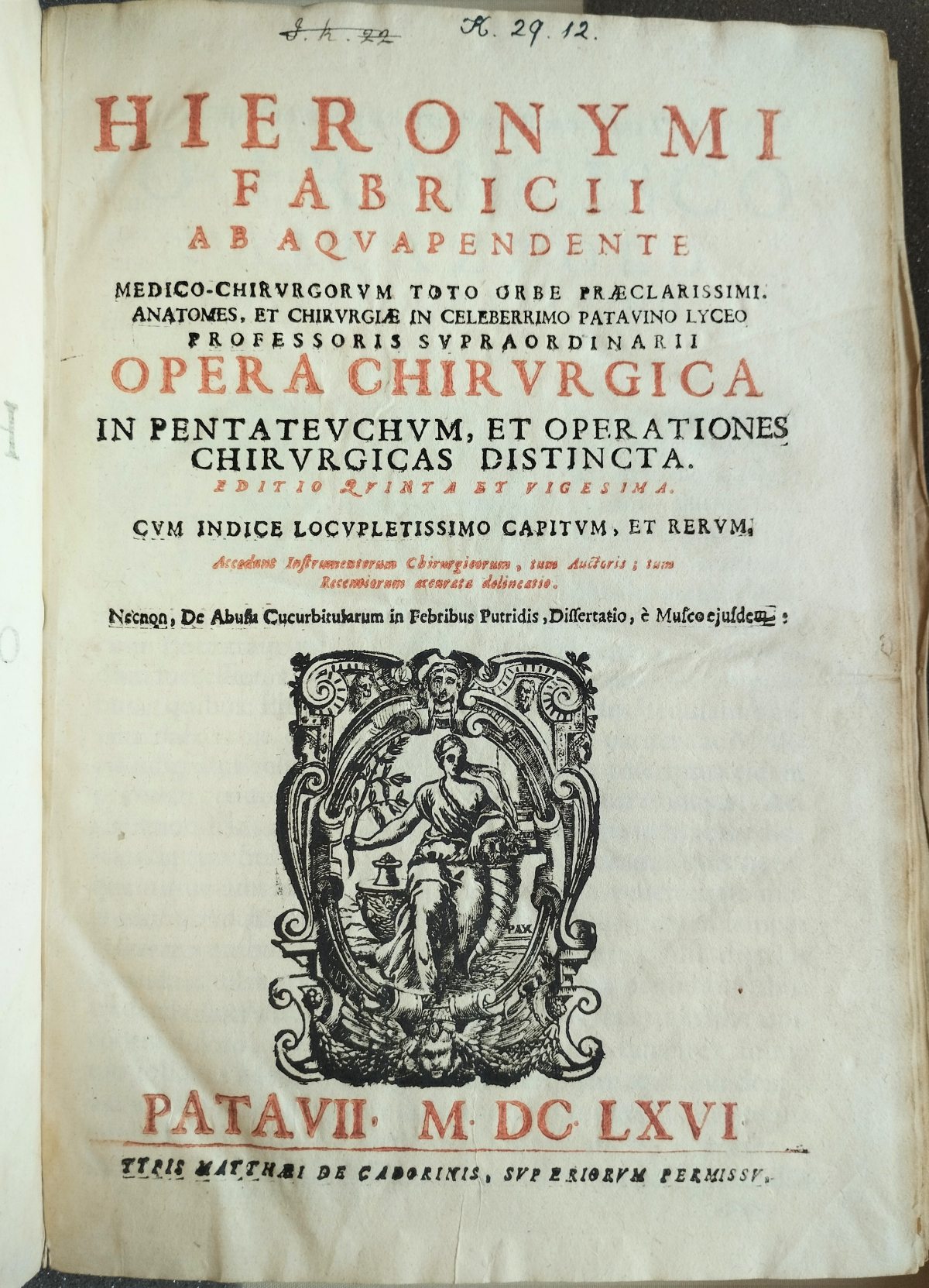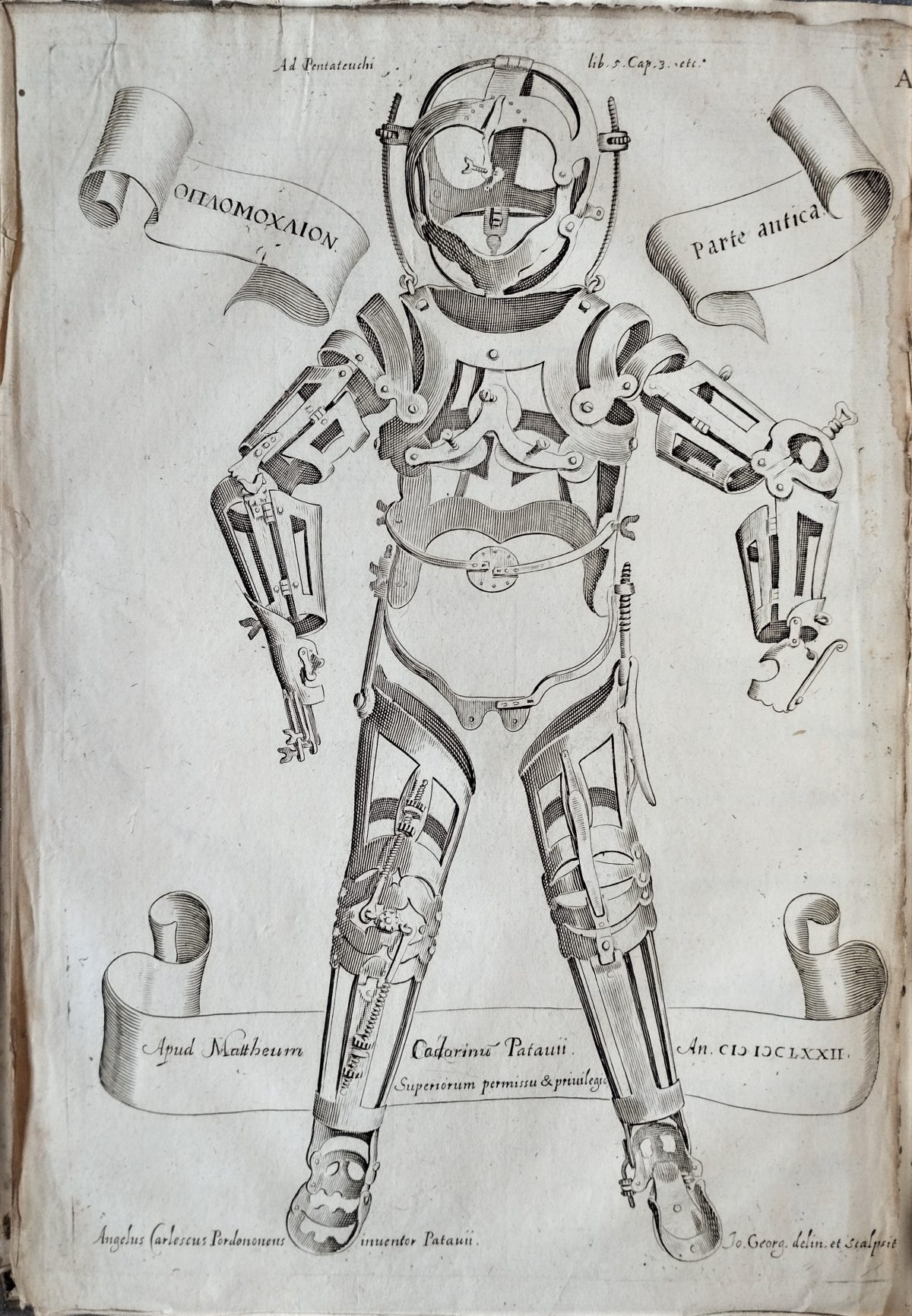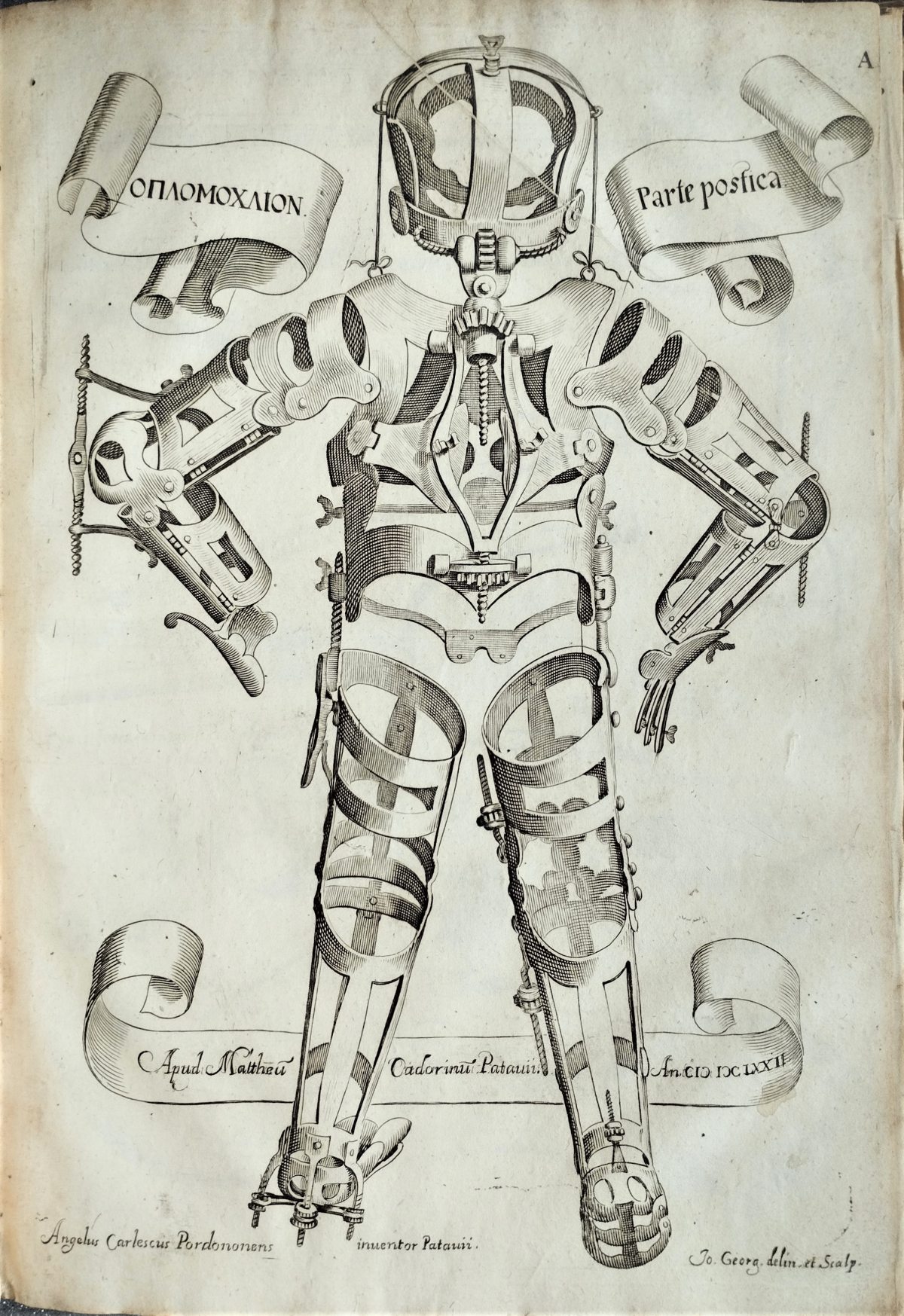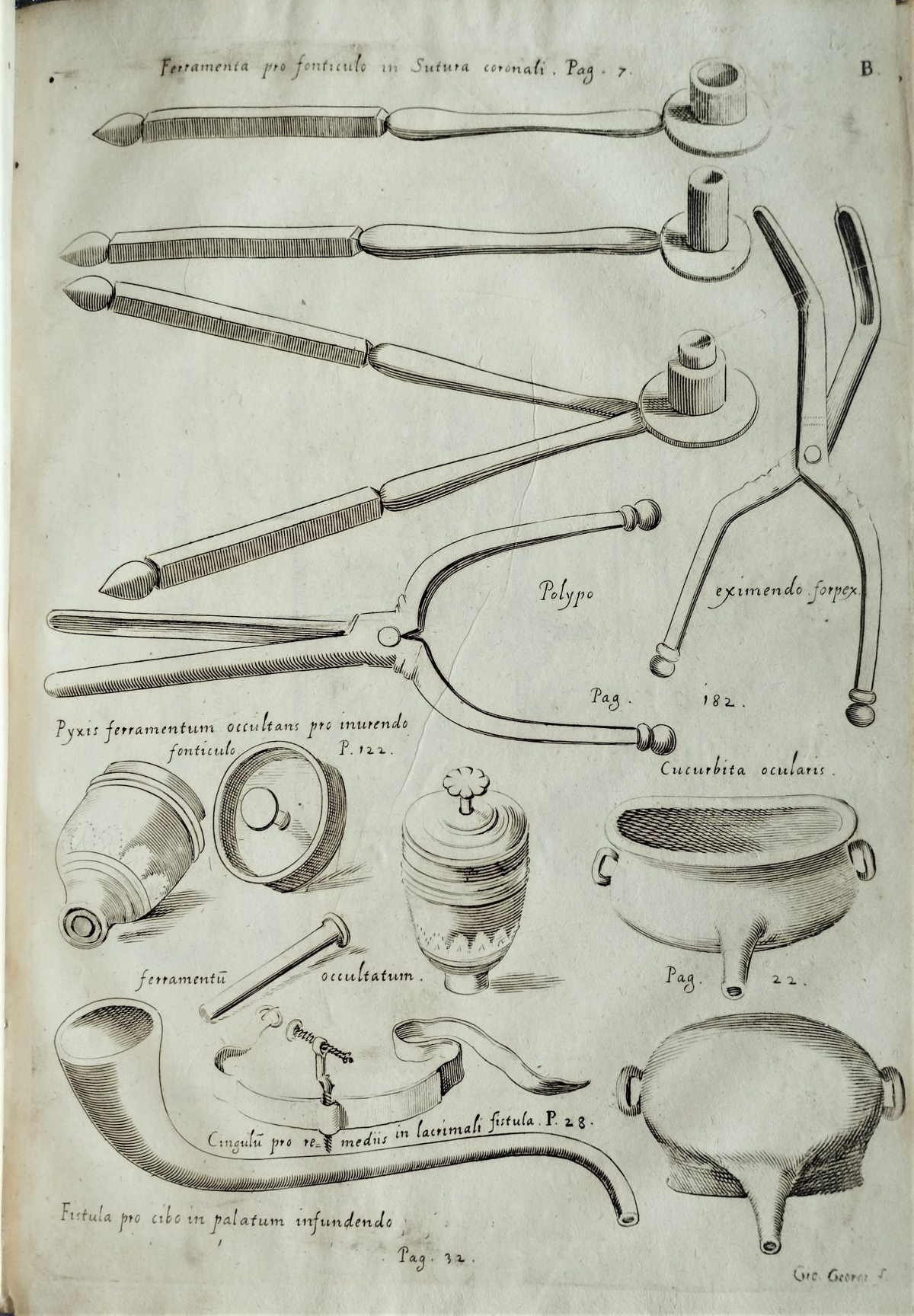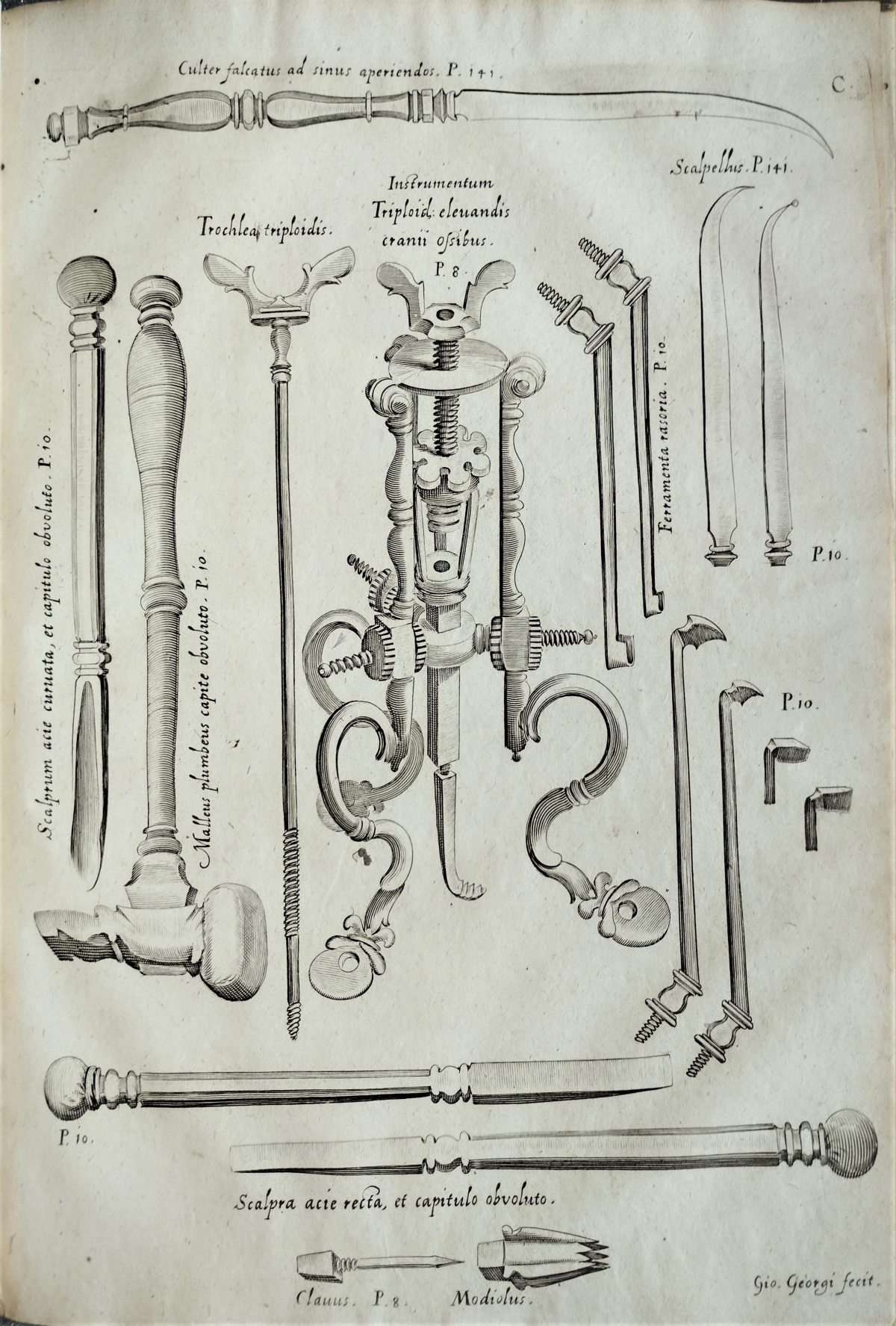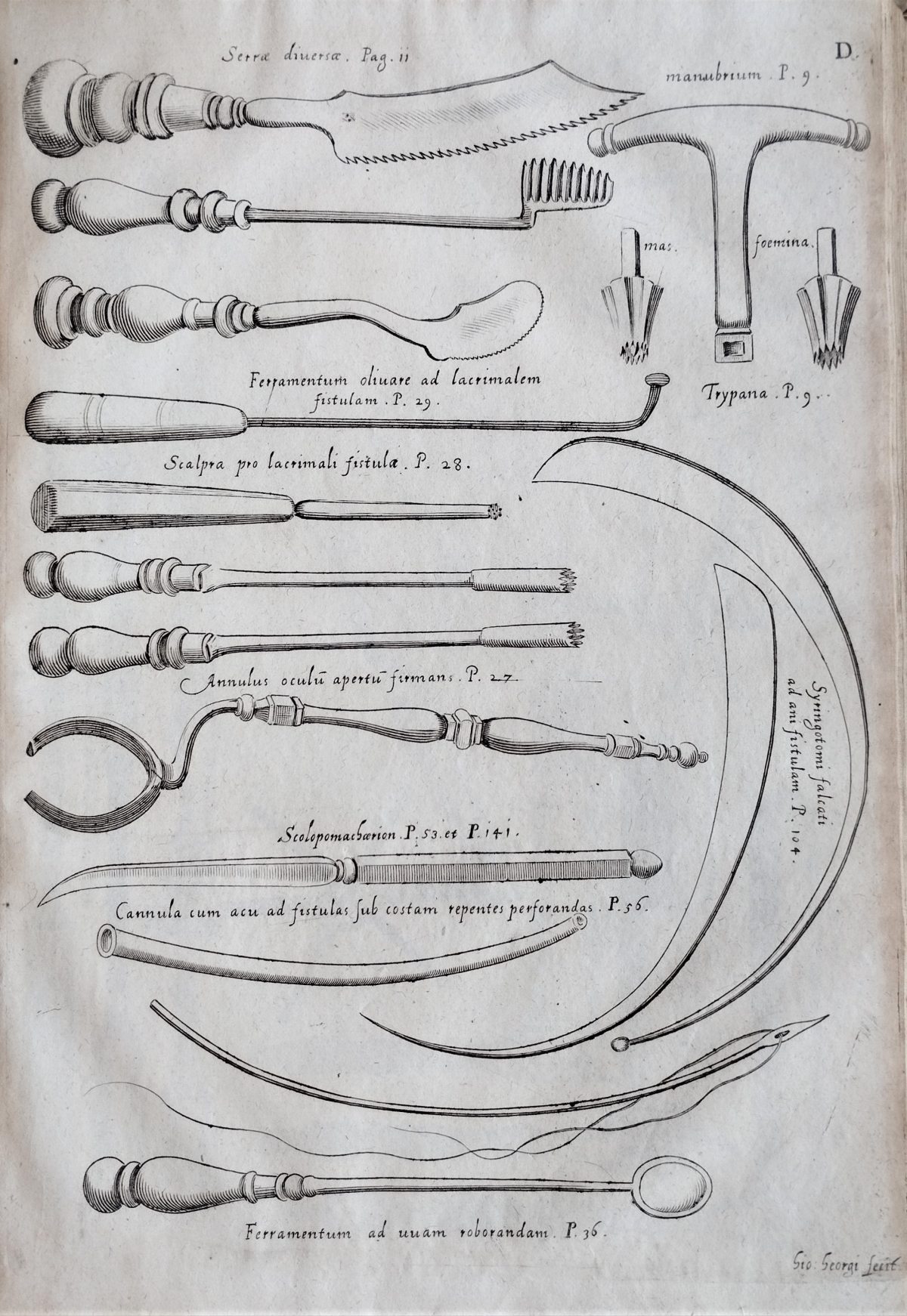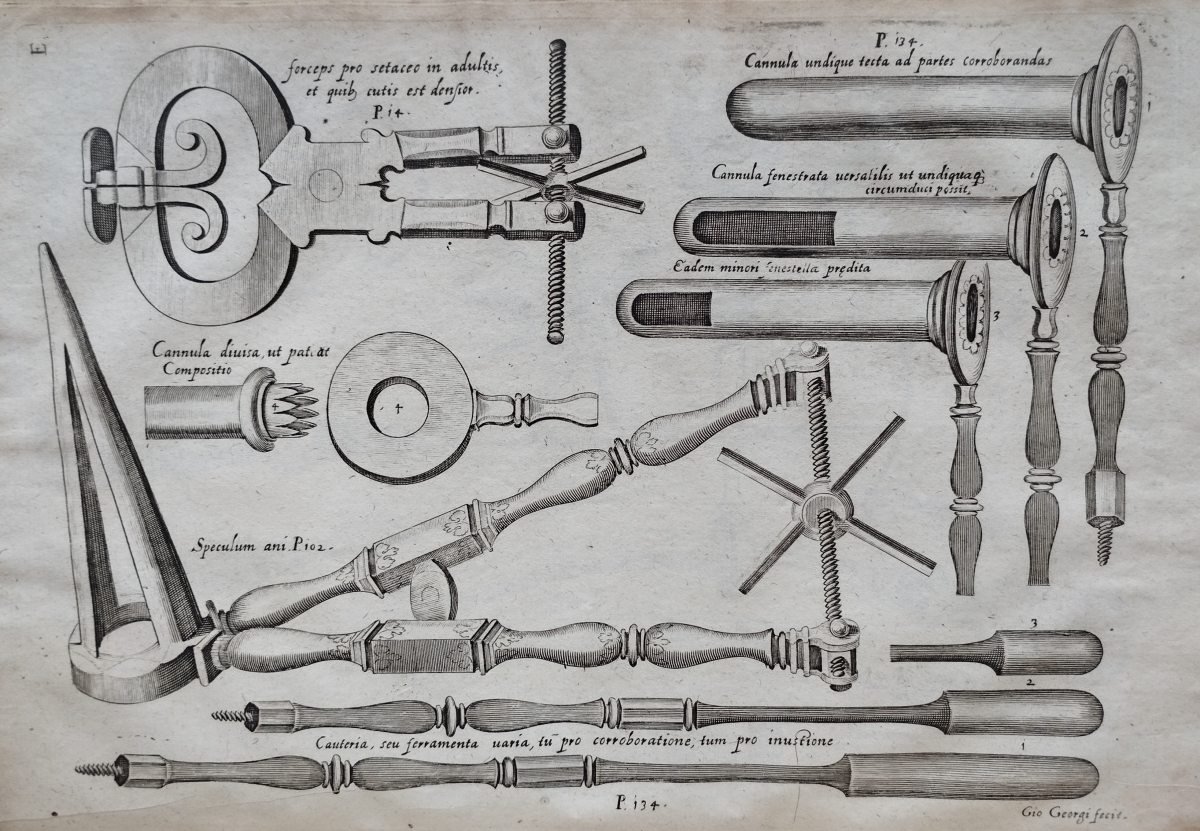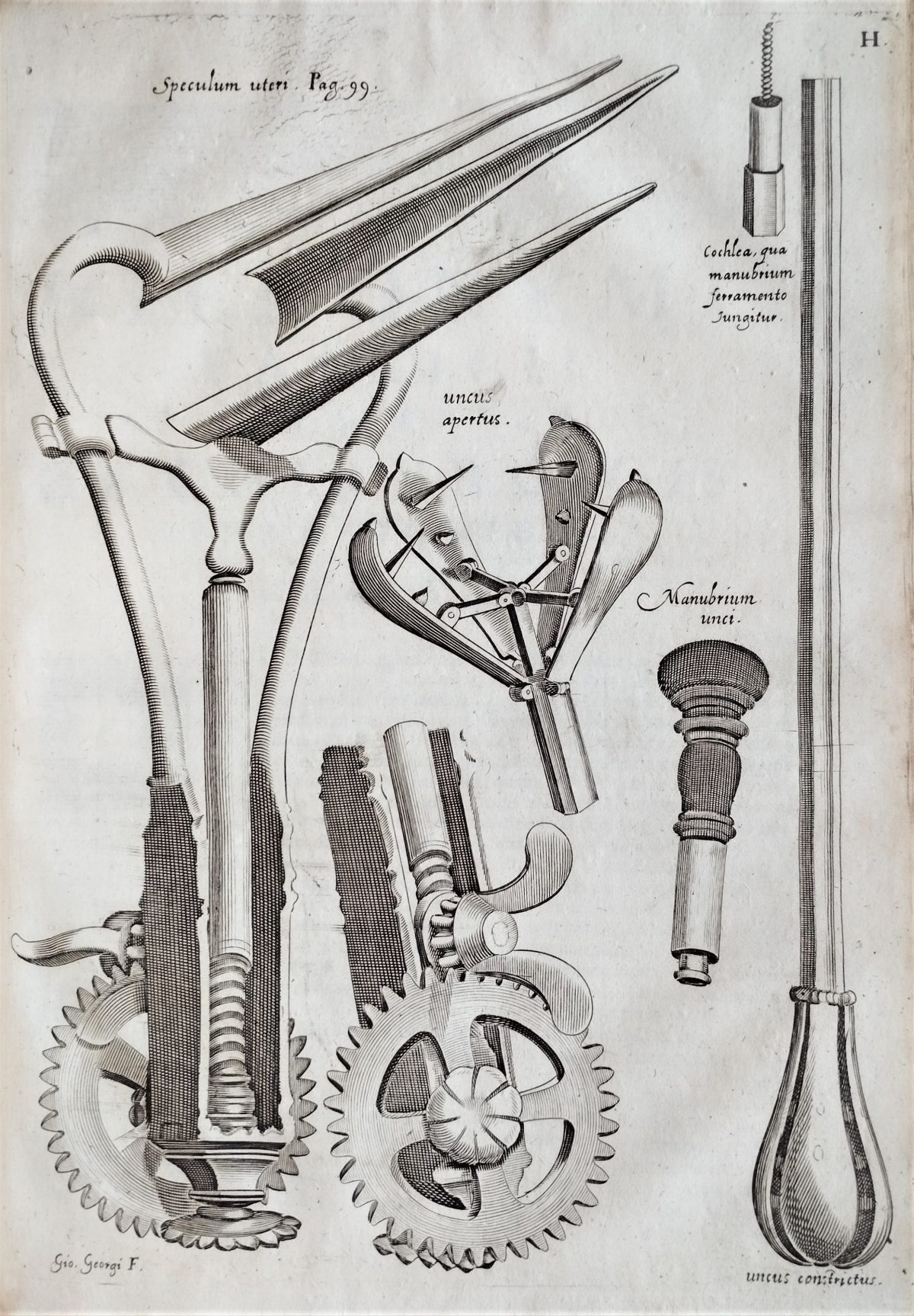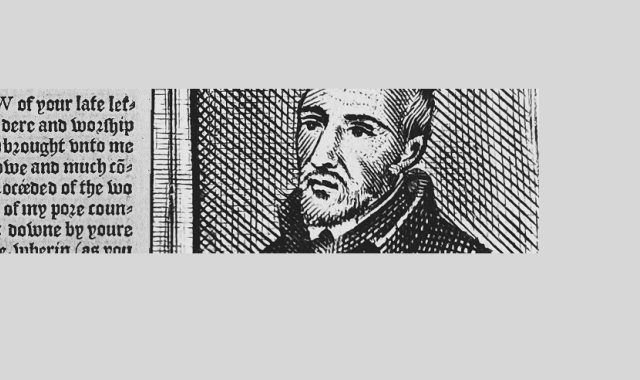The armoured man
Opera chirurgica in pentateuchum (Surgical works in five books), by Hieronymus Fabricius ab Aquapendente. Printed in Padua by Matteo Cadorin, 1666. Lower Library, K.29.12
Hieronymus Fabricius ab Aquapendente (c. 1553–1619) was an Italian Renaissance anatomist, surgeon and physiologist. Professor of anatomy at the University of Padua from 1565 to 1613, he founded there the world’s first permanent anatomical theatre in 1595. With his famous surgical works Pentateuchos chirurgicum (1592) and Operationes chirurgicae (1617), Fabricius effectively established surgery as an essential component of the medical profession.1
Fabricius, in continuity with his predecessors, Gabriele Fallopio and Andreas Vesalius, strongly supported the practical approach to anatomy as a means of effectiveness in the study of the subject. William Harvey, student and fellow of Gonville and Caius, was his pupil from 1599 to 1602 and went on to prove the circulation of blood by describing the true purpose of those venous valves only observed by Fabricius in his De venarum ostiolis.
Fabricius was one the first authors to consider orthopaedic surgery as a specialty of its own. He outlined some principles of treatment that are still valid nowadays, such as anatomical reduction and stabilization of the fracture, that were applied using the equipment available at that time. He described and illustrated manoeuvres and instruments, such as pulleys, winches, splints, and bandages.
His passion in depicting orthopaedic techniques with images and diagrams led him to draw the ‘Oplomochlion’ (i.e., the ‘armoured man’, redefined as the ‘orthopaedic man’ in modern times). To modern eyes this figure may look like an Iron Man exoskeleton, centuries ahead the advent of robotics, but it’s in fact a collection of all the braces in use to correct congenital and post-traumatic deformities. They are arranged with a demonstrative purpose and a topographic criterion, as if on an exhibition dummy.2
The Science Museum of London holds in its collection an articulated iron manekin, only 56×260×350 mm, very similar to the Oplomochlion. This was possibly used to teach students about injuries to limb joints and their treatment.
Medical history shows the use of bracing and prosthetic replacements since the Egyptians, but it was in Renaissance times that biomedical technology reached new heights. Fabricius was without doubt one of the most illustrious contributors to these great achievements.
This book was bequeathed to the Library by Sir James Burrough Miles, Master of Gonville and Caius from 1754 to 1764.
In the gallery you can see the front and back side of the Oplomochlion, alongside many other surgery and orthopaedic tools illustrated in the text.
Awl or nothing << The armoured man >> Fui Caius
- F. Vandenbulcke et al., ‘The Iron Man of the Renaissance: The Contribution of Girolamo Fabrizi d'Acquapendente’, International Orthopaedics 44, no. 2 (2020): 399–402.
- Carlo Biz et al., ‘Girolamo Fabrici d'Acquapendente and the Oplomochlion: The Several Applications of an Effective Rehabilitation Tool’, American Journal of the Medical Sciences 359, no. 1 (2020): 1–7.


